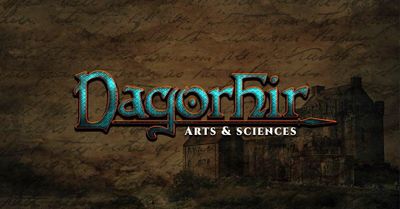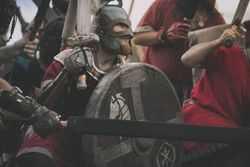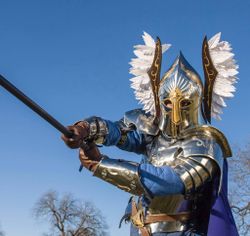Difference between revisions of "Arts and Sciences"
Brogarvolant (talk | contribs) |
|||
| (48 intermediate revisions by 5 users not shown) | |||
| Line 1: | Line 1: | ||
| − | + | [[File:arts+science.jpg|400px|Center|thumb|]] | |
| + | ==Weapons== | ||
| − | |||
| + | ===Materials=== | ||
| + | |||
| + | <div style="column-count:3;-moz-column-count:3;-webkit-column-count:3"> | ||
| + | *[[Weapon Core]] | ||
| + | *[[Weapon Foam]] | ||
| + | *[[Weapon Cover]] | ||
| + | *[[Weapon Grip]] | ||
| + | *[[Bonding and Glue]] | ||
| + | |||
| + | </div> | ||
| + | |||
| + | |||
| + | ===Construction=== | ||
| − | |||
<div style="column-count:3;-moz-column-count:3;-webkit-column-count:3"> | <div style="column-count:3;-moz-column-count:3;-webkit-column-count:3"> | ||
*[[Short Sword Construction (Blue)]] | *[[Short Sword Construction (Blue)]] | ||
| + | *[[Bat Construction (Blue)]] | ||
*[[Mace Construction (Blue)]] | *[[Mace Construction (Blue)]] | ||
*[[Flail Construction (Blue)]] | *[[Flail Construction (Blue)]] | ||
| − | *[[ | + | *[[Axe Construction (Blue)]] |
*[[Great Sword Construction (Red)]] | *[[Great Sword Construction (Red)]] | ||
| − | *[[ | + | *[[Hammer Construction (Red)]] |
| + | *[[Spear Construction (Green)]] | ||
| + | *[[Dagger Construction (Green)]] | ||
*[[Rock Construction (White)]] | *[[Rock Construction (White)]] | ||
*[[Javelin Construction (Yellow)]] | *[[Javelin Construction (Yellow)]] | ||
*[[Arrow Construction (yellow)]] | *[[Arrow Construction (yellow)]] | ||
| + | *[[Shield Construction ]] | ||
| + | *[[Crossguard Construction]] | ||
| + | *[[Hilt Construction]] | ||
| + | </div> | ||
| + | |||
| + | ==Garb (Costume)== | ||
| + | While participation in battle games typically requires an attempt be made to dress in historical/tolkeinesque costume or garb, first-time participants are usually loaned a basic t-tunic or tabard by their local group until they can acquire their own. After attending the first few practices or events it is encouraged that members either purchase or make their own set of garb. Between realms and units one may find some groups more or less focused on garb and characterization versus the actual competitive fighting aspect of Dagorhir, however there persists a commonly agreed upon standard of minimum effort made toward a "medieval fantasy" aesthetic at most major events. Generally it is most cost effective for individuals to sew garb at home than purchase it, however established merchants who cater specifically to Dagorhirrims' needs offer renowned craftsmanship for agreeable prices and play a vital role in any events merchanting and overall success from season to season. Learning a craft is oftentimes rewarding in itself and over the years Dagorhirrim have compiled some tried and true tutorials on how to make great garb. | ||
| + | |||
| + | <div style="column-count:3;-moz-column-count:3;-webkit-column-count:3"> | ||
| + | *[[Tunics and legwear]] | ||
| + | *[[Footwear]] | ||
| + | *[[Belts, hats, accessories]] | ||
| + | *[[Hot and inclement weather]] | ||
| + | |||
| + | </div> | ||
| + | |||
| + | ==Armor== | ||
| + | Protective armor that meets requirements outlined in the MoA offers in-game benefits at the cost of encumberance to varrying degrees. While some armor worn may be more restrictive than other types of armor they all provide the exact same level of in-game protection | ||
| + | |||
| + | At this time, textiles such as layered linen (Greek linothorax) and quilted (gambeson) type armors are not considered armor and therefore offer no in-game protection. Rigid plastic safety equipment like that used in hockey, or armor made from hdpe plastic barrels are likewise not considered armor.[[File:Wargar.jpg|250px|thumb|right]] | ||
| + | |||
| + | ===Leather Armor=== | ||
| + | [[File:Bollard.jpg|250px|thumb|right]] | ||
| + | Leather armor utilizes vegetable-tanned leather of 3/16" or 12oz. Nominally this is measured at about 4.8 mm using calipers. Latigo or harness leathers also work but rigidity is usually desirable and oils/waxes tend to soften when warm. Leather armor is often carved and decorated with an individuals heraldry or household badge, or distressed to appear battle-worn. Styles of construction vary widely but pieces are usually held together with a combination of rivets, floating articulation, and straps. | ||
| + | |||
| + | Suppliers such as Tandy, Weaver, and Springfield Leather offer "armor/sole" bends which work great for making armor. At this time cured rawhide is not considered leather armor, however event heralds will have final say. | ||
| + | |||
| + | <div style="column-count:3;-moz-column-count:3;-webkit-column-count:3"> | ||
| + | |||
| + | |||
| + | </div> | ||
| + | |||
| + | ===Metal Armor=== | ||
| + | Armor made from metal comes in two basic varieties: woven links of maille and plates of varying sizes. By far the most common are coats and shirts of maille, which offer a good protection/encumbrance payoff. Plates of metal sheet attached to a textile or leather shell ala "coat of plates" are also quite common, but tend to be a little heavier. | ||
| + | |||
| + | Because metal armor must be made from period materials, aluminum is disallowed. Use of titanium is currently allowed | ||
| + | |||
| + | <div style="column-count:3;-moz-column-count:3;-webkit-column-count:3"> | ||
</div> | </div> | ||
Latest revision as of 13:38, 27 November 2018
Contents
Weapons
Materials
Construction
- Short Sword Construction (Blue)
- Bat Construction (Blue)
- Mace Construction (Blue)
- Flail Construction (Blue)
- Axe Construction (Blue)
- Great Sword Construction (Red)
- Hammer Construction (Red)
- Spear Construction (Green)
- Dagger Construction (Green)
- Rock Construction (White)
- Javelin Construction (Yellow)
- Arrow Construction (yellow)
- Shield Construction
- Crossguard Construction
- Hilt Construction
Garb (Costume)
While participation in battle games typically requires an attempt be made to dress in historical/tolkeinesque costume or garb, first-time participants are usually loaned a basic t-tunic or tabard by their local group until they can acquire their own. After attending the first few practices or events it is encouraged that members either purchase or make their own set of garb. Between realms and units one may find some groups more or less focused on garb and characterization versus the actual competitive fighting aspect of Dagorhir, however there persists a commonly agreed upon standard of minimum effort made toward a "medieval fantasy" aesthetic at most major events. Generally it is most cost effective for individuals to sew garb at home than purchase it, however established merchants who cater specifically to Dagorhirrims' needs offer renowned craftsmanship for agreeable prices and play a vital role in any events merchanting and overall success from season to season. Learning a craft is oftentimes rewarding in itself and over the years Dagorhirrim have compiled some tried and true tutorials on how to make great garb.
Armor
Protective armor that meets requirements outlined in the MoA offers in-game benefits at the cost of encumberance to varrying degrees. While some armor worn may be more restrictive than other types of armor they all provide the exact same level of in-game protection
At this time, textiles such as layered linen (Greek linothorax) and quilted (gambeson) type armors are not considered armor and therefore offer no in-game protection. Rigid plastic safety equipment like that used in hockey, or armor made from hdpe plastic barrels are likewise not considered armor.
Leather Armor
Leather armor utilizes vegetable-tanned leather of 3/16" or 12oz. Nominally this is measured at about 4.8 mm using calipers. Latigo or harness leathers also work but rigidity is usually desirable and oils/waxes tend to soften when warm. Leather armor is often carved and decorated with an individuals heraldry or household badge, or distressed to appear battle-worn. Styles of construction vary widely but pieces are usually held together with a combination of rivets, floating articulation, and straps.
Suppliers such as Tandy, Weaver, and Springfield Leather offer "armor/sole" bends which work great for making armor. At this time cured rawhide is not considered leather armor, however event heralds will have final say.
Metal Armor
Armor made from metal comes in two basic varieties: woven links of maille and plates of varying sizes. By far the most common are coats and shirts of maille, which offer a good protection/encumbrance payoff. Plates of metal sheet attached to a textile or leather shell ala "coat of plates" are also quite common, but tend to be a little heavier.
Because metal armor must be made from period materials, aluminum is disallowed. Use of titanium is currently allowed


